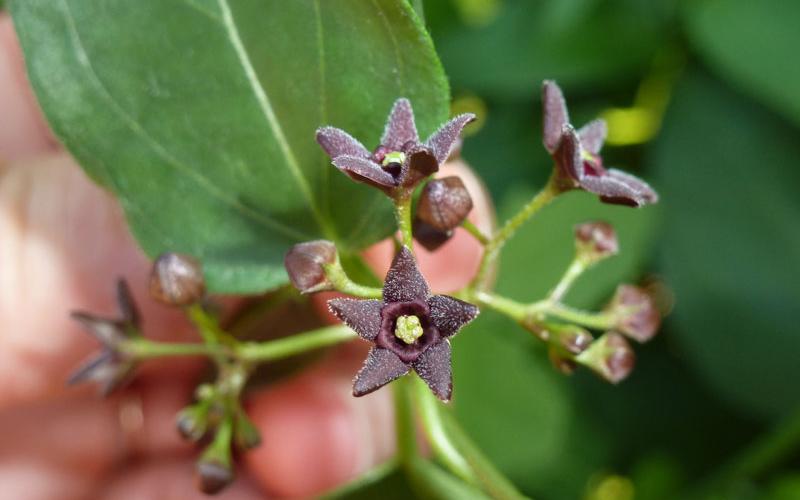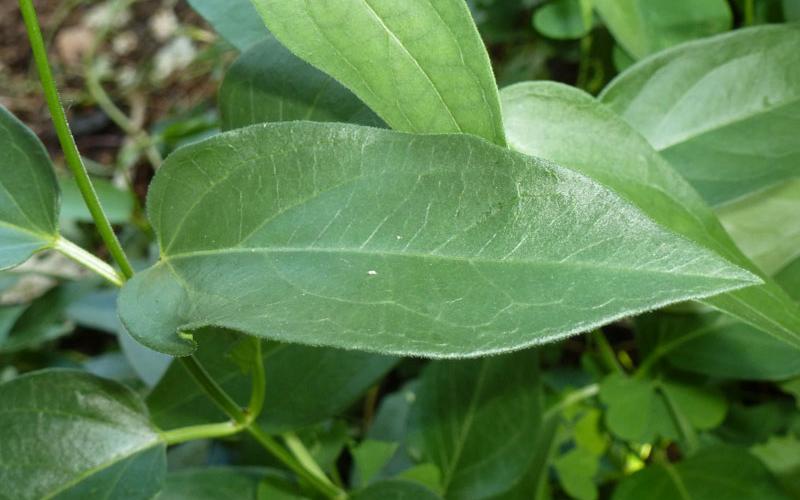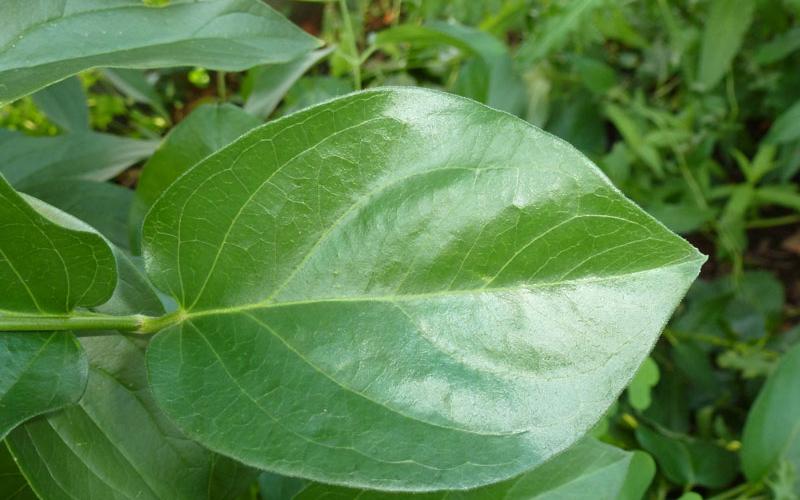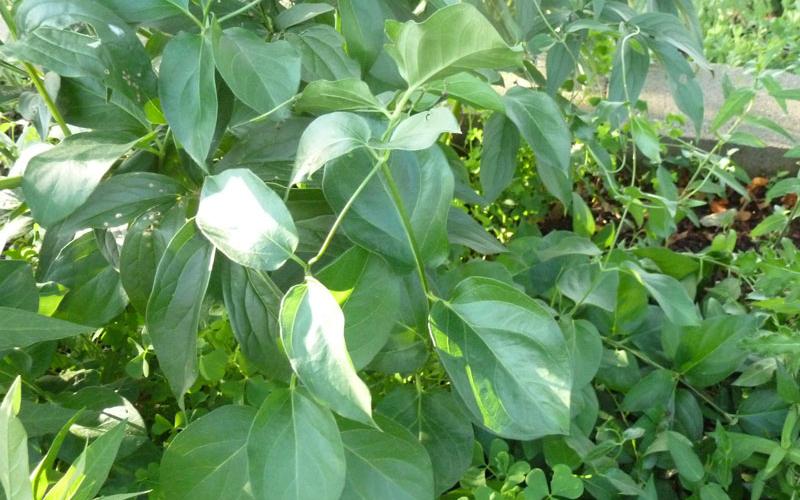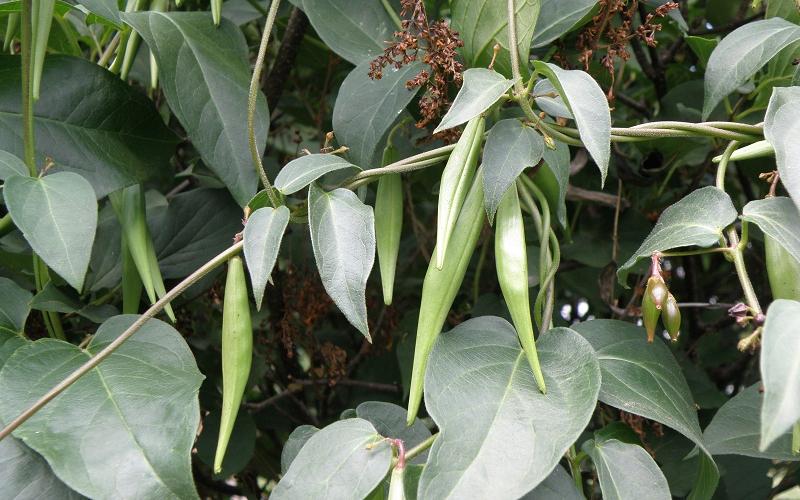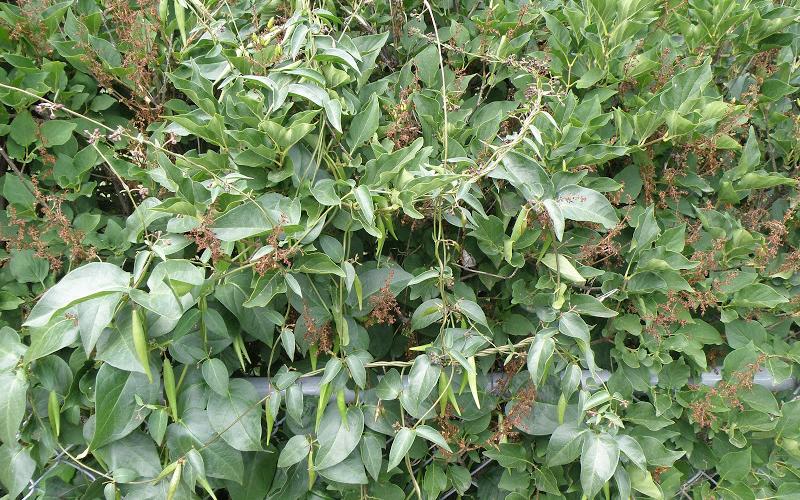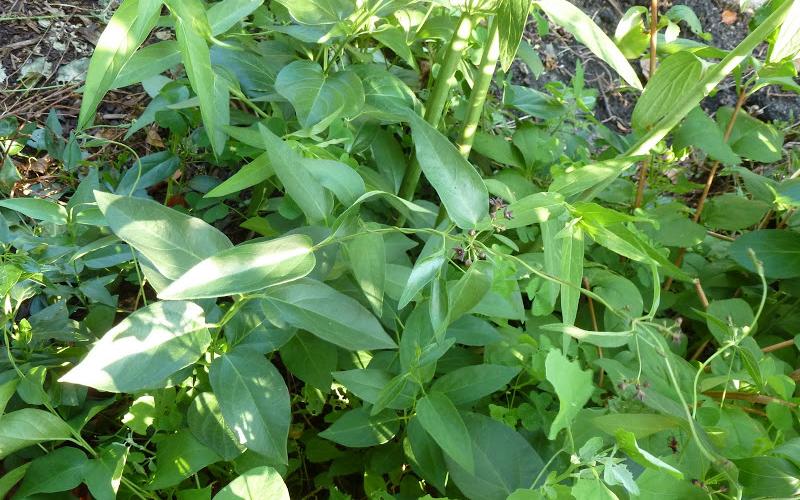Common Names: Black swallow-wort, Dog strangle vine
Scientific Name: Cynanchum louiseae (Kartesz & Gandhi)
Legal Status
All above and below ground parts of the plant must be destroyed. Additionally, no transportation, propagation, or sale of this plant is allowed. Failure to comply may result in an enforcement action by the county or local municipality.
Background
Black swallow-wort is native to Europe. It was first cultivated in greenhouses in the mid-1800s in Ipswich and at the Harvard Botanical Garden, both in Essex County, Massachusetts. In 1864, an Essex County collector recorded it was “escaping from the botanic garden where it is a weed and promising to become naturalized.” History proved that the collector was right. Black swallow-wort is now in every county in Massachusetts and has spread into surrounding states as well as many northern Midwestern states and California.
Description
- Black swallow-wort is an herbaceous perennial in the milkweed family. It is a vine with twining stems up to 6 feet long with dark green, glossy foliage.
- The lance-shaped leaves are opposite with smooth edges.
- Flowers are 1/8 inch, purple with a yellow center, star shaped, and borne in clusters at leaf axils.
- Fruit is a typical milkweed-like pod, 2- 2 1/2 inches in length, 3/8 inch in diameter and smooth skinned. When mature, the pods open to release rounded and flattened brown seeds ¼ inch long with silky filament at the tip.
- Roots are fleshy with a thickly budded rhizomatous crown just below the soil surface.
Habitat
Black swallow-wort readily invades gardens, old fields, pastures, fence rows, wooded edges, riparian areas and roadsides. It grows in full sun and light shade.
Means of spread and distribution
Like native milkweeds, fluffy filaments attached to the seed enable it to be moved by the wind. This is the primary means of long-range dispersal but seeds can also be moved by humans, animals and vehicles. Established vines can spread by rooting (stoloniferous) stems to form large tangles of vines.
Black swallow-wort is reported from Maine to Minnesota to Nebraska and in California. Extensive infestations are in New England. In Minnesota, there are small infestations in several counties.
Impact
Black swallow-wort overtakes and suppresses other vegetation, reducing species diversity and wildlife habitat. Infestations can eventually cover several acres of land and the tangled vines form impenetrable thickets. Reduced effectiveness of electric fences around pastures has been observed in areas with rampant swallow-wort vine growth in Rhode Island. Swallow-wort is problematic in tree plantations and no-till corn and soybean fields in New York. Often, the vines are not noticed until they are well-established and difficult to control.
As a member of the milkweed family, there has been concern that black swallow-wort could have a negative impact on monarch butterflies. Monarch caterpillars feed on other milkweed species and most do not survive on black swallow-wort. Female monarchs will lay their eggs on black swallow-wort, but they have a strong preference for common milkweed. However, black swallow-wort can displace common milkweed and reduce habitat for monarchs.
Prevention and management
- Once established, black swallow-wort vines are difficult to control. For all management options, infestation sites will need to be monitored and treated repeatedly until the seedbanks are depleted.
- Do not plant black swallow-wort.
- Small infestations can be controlled manually by digging and removing the root crowns.
- Large infestations can be controlled with either foliar or cut-stem herbicide applications. For specific herbicide recommendations, contact your University of Minnesota Regional Extension Educator.
Toxicity
It is suspected but not documented that black swallow-wort is toxic to mammals. Grazing animals, including sheep, avoid the vines.
